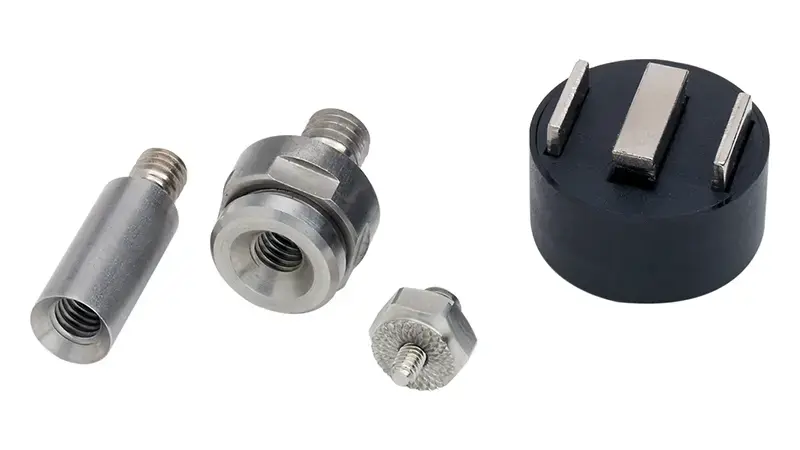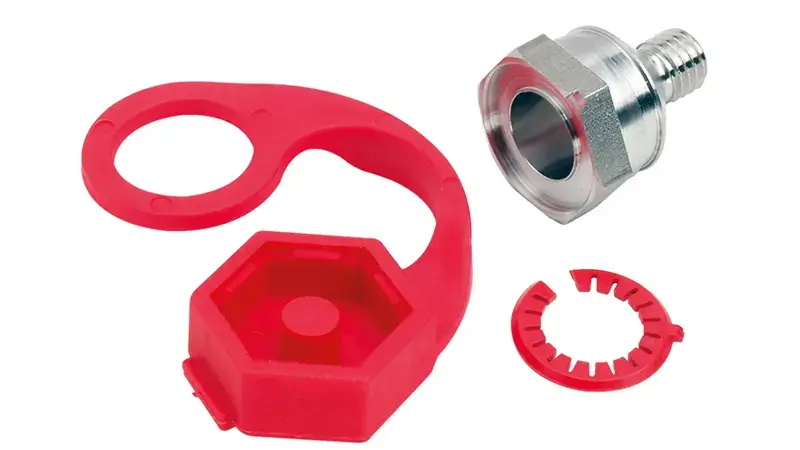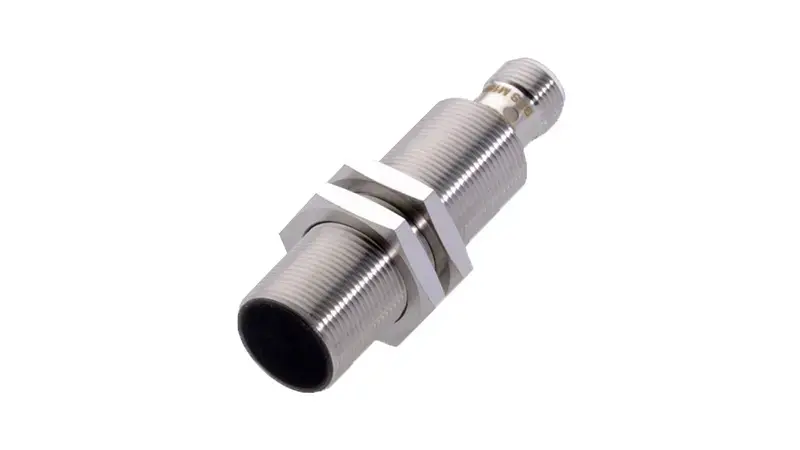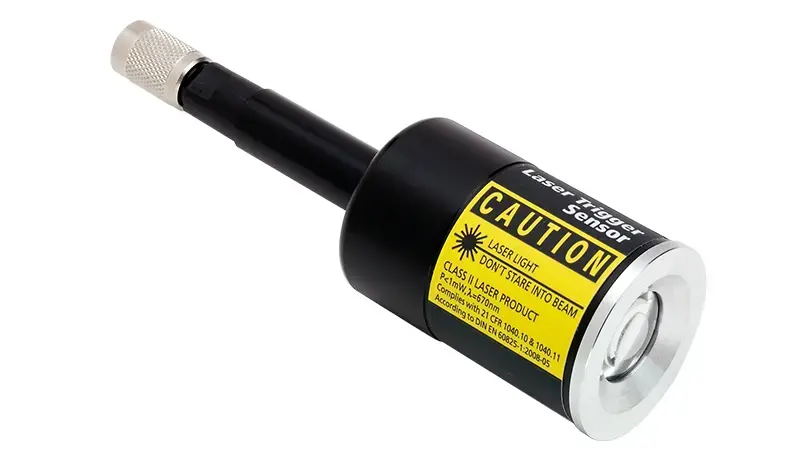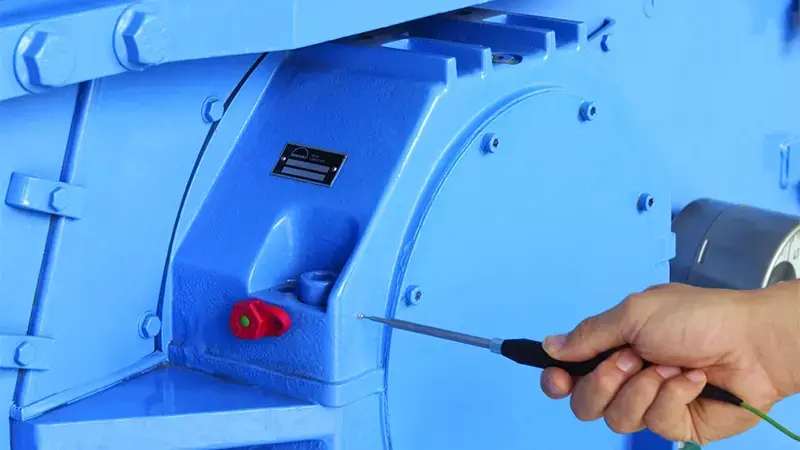Sensors and accessories for vibration measurement and Condition Monitoring
Large selection of vibration sensors: accelerometers, displacement sensors, VIBCODE transducer and triaxial sensors
Accelerometers measure vibration acceleration, shock pulse (roller bearing condition) and pump cavitation
Also available in compact size, for low-speed machines and as combi sensors for vibration and temperature
Patented tandem-piezo technology eliminates the disadvantages of conventional sensors
High-quality signal transmission over long distances up to 1,000 meters (3,200 feet) with current line drive (CLD) signal amplification
Various mounting types
EX / ATEX versions available
Temperature probes, keyphasers, cables, adaptors and tools available
Interested?
Find out more …
Frequently Asked Questions
A vibration sensor is a device used to measure the vibrations emitted by equipment and assets. Vibration sensors measure levels of displacement, velocity, and acceleration.
Changes in these measurements that fall outside of a predefined threshold for normal operation can indicate a problem, such as a worn bearing, misaligned parts, or other condition that requires attention. Vibration monitoring is one of the most effective forms of condition monitoring because it can pick up on these problems months before they become serious enough to cause asset failure. This enables maintenance teams to address the problems and schedule maintenance proactively, reducing the risk of unplanned downtime.
Here's how a vibration sensor works: Every piece of rotating equipment has its own vibration signature. When a machine’s normal vibration patterns change, it may indicate a fault. Changes to vibration patterns can reveal a wide array of problems, including looseness, imbalance, or premature wear. Vibration patterns also change when your machine parts are cracked or improperly connected.
Modern vibration sensors can capture and transmit vibration data on a continuous basis, making this data available for analysis in real-time. This makes it easy for your maintenance team to see exactly what’s going on with your assets, so that they can stay a few steps ahead of your maintenance needs.
When used as part of a comprehensive predictive maintenance strategy, vibration sensors can drastically reduce downtime and increase your operation’s productivity.
What are the Different Types of Vibration Sensors?
There are a number of different
types of vibration sensors
on the market, including a variety of vibration sensing technologies, as well as both wireless and wired sensors. It is important to choose a sensor that fits your needs and your budget. The following is a high-level overview of the different types of vibration sensors on the market today.
Accelerometer Vibration Sensors
Accelerometers are the most commonly used kind of vibration sensor. They measure changes in the velocity of your assets’ vibrations.
Accelerometer vibration sensors
are highly sensitive and can pick up on even subtle changes in vibration.
There are many different kinds of accelerometers, including:
Vibration Meters are small, hand-held devices that can measure vibrations on an as-needed basis.
Vibration meters
often do not directly attach to your machinery, though some can be configured that way. Instead, technicians use them as part of routine inspections. Vibration meters often include accelerometers.
Vibration meters are convenient and accurate. However, they cannot provide data on a continuous basis, the way wireless vibration sensors can. This means that vibration meters alone can’t enable a predictive maintenance strategy.
MEMs Vibration Sensors are widely used because of their frequency response. They excel at picking up vibration frequencies between 0 and 1,000 hertz. Changes in those lower frequencies typically point to problems with imbalance, misalignment, and looseness. MEMs sensors are also cost-effective, offer a long battery life, and have high IP ratings for reliable operation in wet or dusty industrial environments.
Piezoelectric vibration sensors, also known as piezo sensors, are often lauded for their performance even in extreme environments. Piezoelectric vibration sensors also pick up on higher frequencies, especially frequencies above 1,000 hertz. Changes in these higher frequencies usually indicate problems with gearboxes and motor bars.
What is a Piezoelectric Vibration Sensor?
Piezoelectric vibration sensors use the piezoelectric effect to measure vibration by converting it into an electrical charge. These sensors rely on piezoelectric elements – usually quartz crystals – to convert the mechanical energy caused by vibrations into electrical signals.
Your technicians will place piezoelectric sensors directly on your equipment or component parts. As the asset vibrates, that movement creates an electrical charge across the piezoelectric element.
Piezo vibration sensors are probably the most widely used form of accelerometer because of their resilience, versatility, and ability to operate in harsh environments.
Why use an industrial vibration sensor?
In the past, vibration sensors were primarily used for large-scale equipment like HVACs. Today, there is more pressure than ever on manufacturers to keep up their production schedules on target and minimize downtime. Most operations are also using more assets than ever before. This makes it more challenging and complex to perform routine inspections.
As a result, more and more industrial operations have started using vibration sensors to monitor the health of their equipment. Vibration sensors alert you to potential problems like misalignment, imbalance, looseness, and gear issues. In many cases, the sensors flag these conditions months before they turn into major problems. That allows your maintenance team to get in and fix the issue ahead of time.
Vibration sensors are a key part of any condition monitoring or predictive maintenance strategy. They allow you to keep tabs on your equipment without forcing you to shut down operations for routine inspections.
You’ll know exactly when and where to replace belts, lubricate parts, or perform other routine maintenance tasks. Ultimately, you’ll save on maintenance costs and maximize your uptime and productivity.
Where do I install vibration sensors?
It’s generally a good idea to install vibration sensors on your critical assets. Vibration sensors can track the health of all of your rotating equipment, including
Motors
Fans and belts
Pumps
Gearboxes
Conveyor systems
Automated assembly lines
Chillers
When first piloting a condition monitoring program, start by installing vibration sensors on the equipment that you rely on to maintain production levels. Install the sensors as close as possible your motor, pump, and shaft bearings. If you’re not sure where or how to mount your sensors, it’s a good idea to consult with condition monitoring experts.



 Fluke Deutschland GmbH
Fluke Deutschland GmbH 


